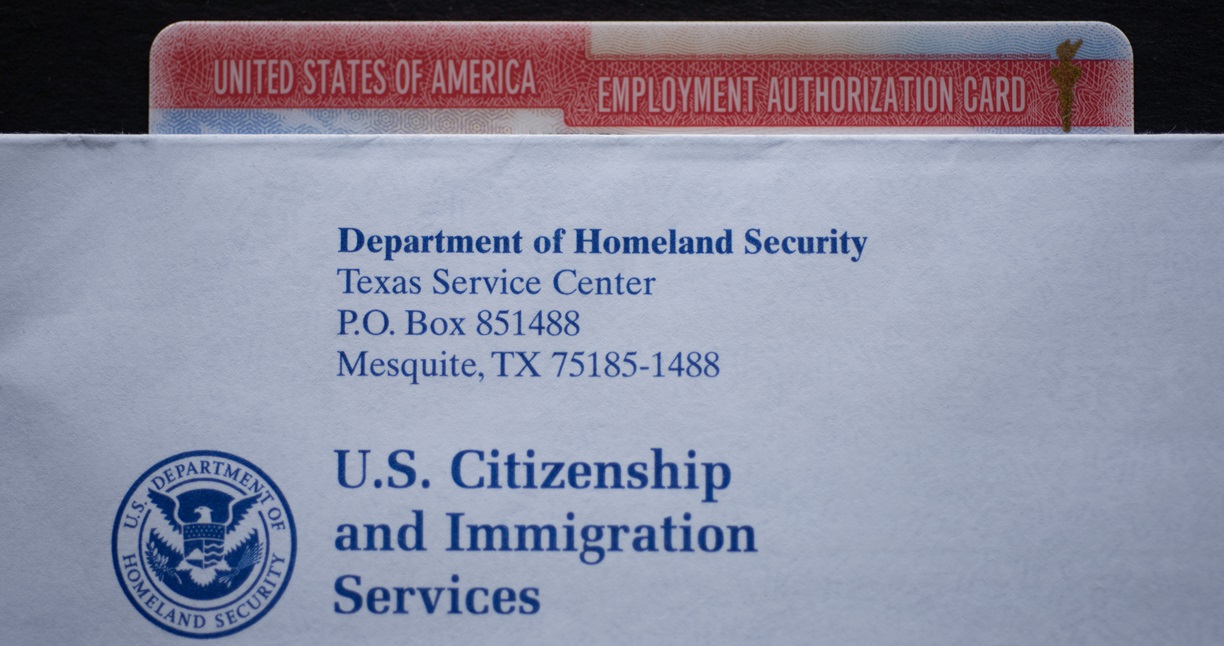USCIS Re-Issues Temporary Rule: Thousands of immigrant workers with pending work permit renewals, and their employers, breathed a sigh of relief last week.
On April 8, U.S. Citizenship and Immigration Services (USCIS) issued a temporary rule that automatically extends the validity period of their work permits for up to 540 days, or about a year and a half. This amends an existing regulation, which provides workers with an automatic extension of up to 180 days. USCIS issued this rule to prevent any lapses in employment for nearly 800,000 workers that could have resulted from the agency’s processing backlogs.
As the United States faces a tight labour market and chronic labour shortages, a temporary lapse in employment authorization for employment-eligible immigrants would provide an unnecessary hit to the economy. According to USCIS estimates, this rule will preserve $29.1 billion in immigrants’ earnings and yield $3.1 billion in employment taxes during five years.
Recently, USCIS has made progress in reducing its work permit processing delays. In November 2022, the average wait time for requests for employment authorization documents (EADs) was nearly nine months, but that was reduced to just under four months as of February 2024. Major cities struggling for months to provide resources to large numbers of newly arrived migrants have seen the fruits of the federal government’s labor as migrants are getting their initial work permits more quickly.
Nevertheless, these figures don’t tell the whole story as disparities in processing between initial and renewal EAD requests have only widened.
For the past few years, overall work permit requests have been rising. For example, fiscal year (FY) 2021 saw a 21% increase in EAD applications from the previous year. This growth in workload, in combination with fiscal and personnel constraints, led USCIS to issue its first temporary rule focused on addressing its backlog of pending work permit renewal requests. Between May 4, 2022, and October 26, 2023, EADs in this backlog were automatically extended for an additional 360 days beyond the regulatory 180-day period (for a total of 540 days) whenever anyone filed a renewal request.
During the same time, in part because of a lawsuit filed by the American Immigration Council and its partners, USCIS has been required to devote significant resources to decreasing its wait times for initial EADs filed by asylum applicants. Before the lawsuit, USCIS consistently failed to meet its regulatory requirement to process them within 30 days. As of December 2023, USCIS has processed 93% of these EADs within the required time.
In October 2023, the temporary rule extending renewed work permits expired, despite warnings to USCIS from local officials and members of Congress that an extension was needed to protect immigrant workers and their employers.
Nearly six months after, USCIS has re-issued the rule as EAD filings haven’t slowed. In FY 2023, the agency received 50% more EAD requests than in FY 2022, including a 77% increase in initial work permit applications. The primary cause of this growth was increased work permit requests based on pending asylum applications, Temporary Protected Status (TPS), and parole.
In addition, USCIS’ resources have been spread thin by other events beyond its control, including having to process a record number of credible fear claims made by migrants detained at the border and the adjudication of more TPS applications. Currently, 16 countries have a TPS designation, five of which were newly designated between FY 2022 and FY 2023.
As a result, USCIS’ processing times for EAD renewals have slipped. In February 2024, 80% of asylum applicants’ work permit renewal requests were processed within an alarmingly high 16 months. Processing times for work permits based on pending green card applications, approved TPS, suspension of deportation, and withholding of removal were also beyond the regulatory 180-day automatic extension period.
The new rule will apply to all renewal EAD requests. This will provide USCIS flexibility as it expects work permit applications to grow by nearly 1 million between FY 2023 and FY 2024. To be considered for the automatic 540-day extension, EAD renewal applications must be properly filed on or after October 27, 2023, and on or before September 30, 2025.
This rule is among several work permit-related policy changes USCIS has made to get EADs to workers faster. USCIS has also requested additional funding from Congress to address processing backlogs and to resource some of its unfunded asylum-related services. Last month, Congress provided USCIS $68 million in backlog reduction funding for FY 2024, far below the $264 million sought by the agency.
While USCIS continues to search for efficiencies and other policy fixes to get otherwise employment-eligible immigrants to work, there’s no doubt that more must be done. As part of the new rule, the agency is seeking comments about EAD renewal processing generally, including whether the rule should be made permanent and whether other solutions could mitigate the risks related to expiring employment authorizations. Comments are due by June 7, 2024.













